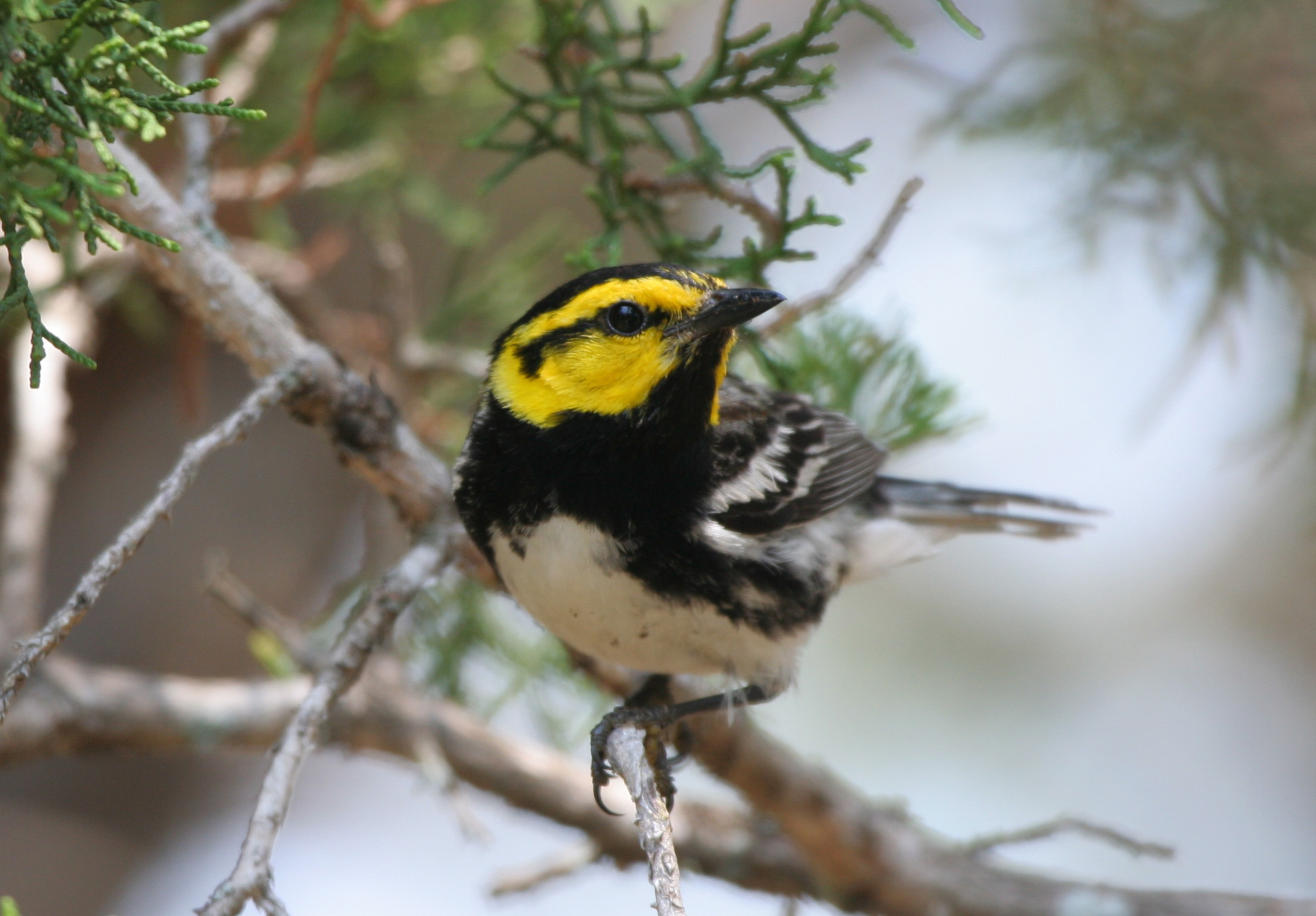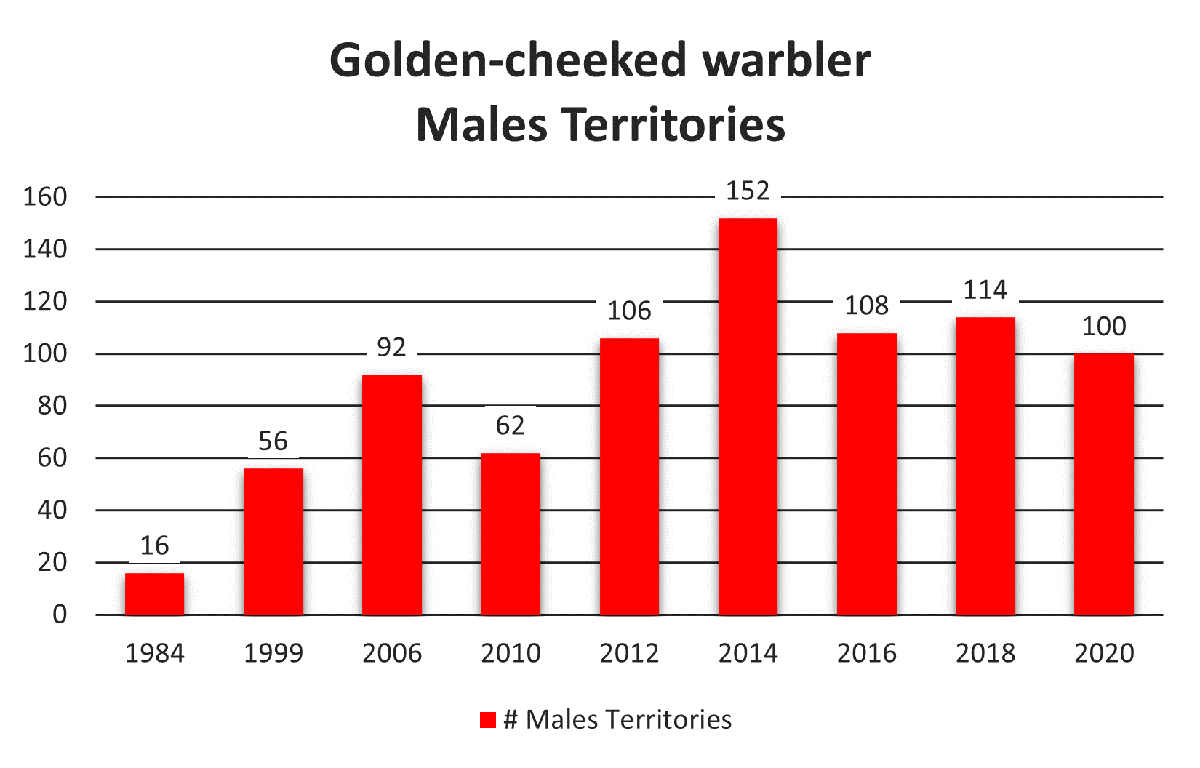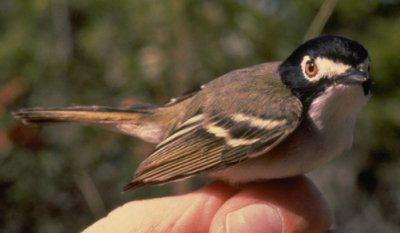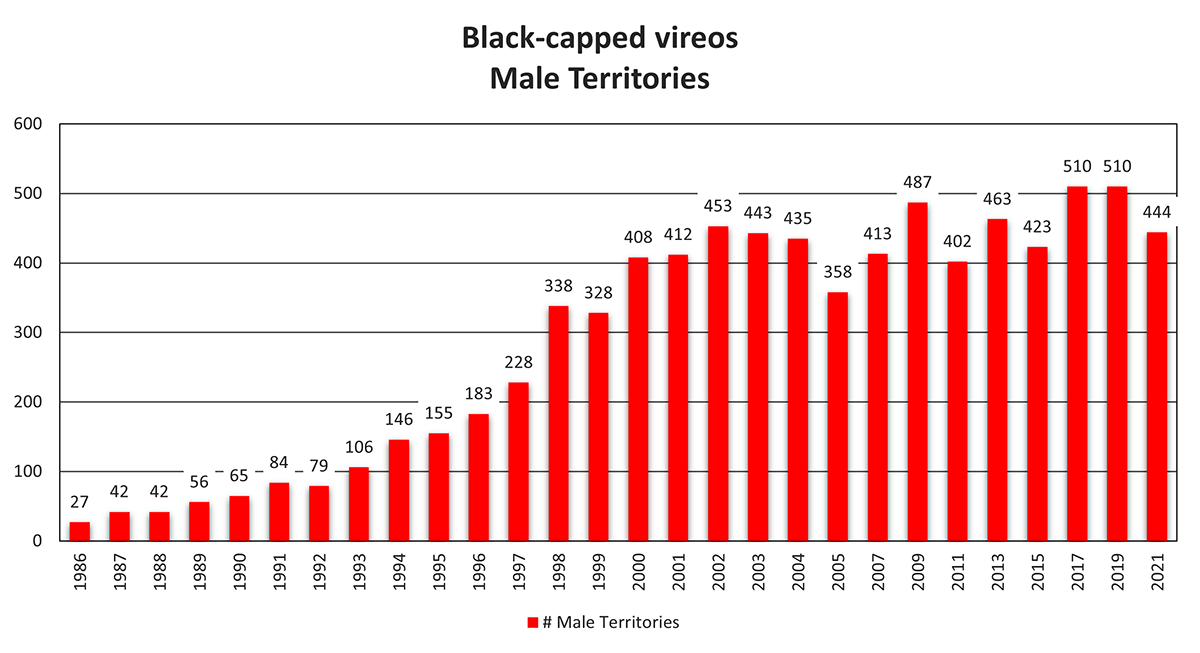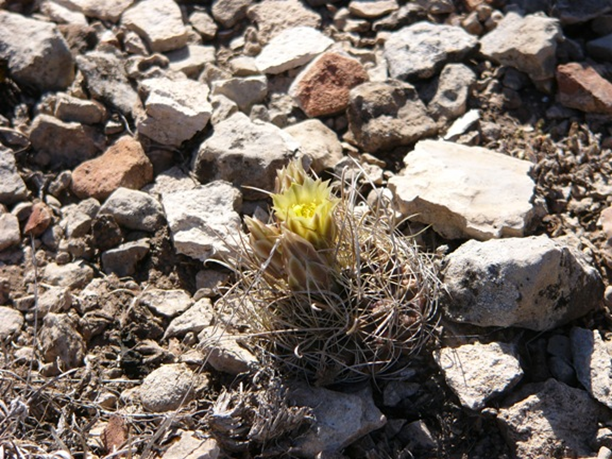Kerr WMA Management Program Endangered Species
Three species of concern inhabit the Kerr Wildlife Management Area. The golden-cheeked warbler and black-capped vireo, both neotropical migrants, utilize the management area during their breeding and nesting seasons, from mid-March through late summer. The Tobusch fishhook cactus is a small cactus species that is found on several sites on the WMA. All three species have increased in number under the holistic management program implemented on the WMA.
Golden-cheeked Warbler
The endangered golden-cheeked warbler is monitored for male territories on the WMA which increased from 16 in 1984 to over 100 in recent years. Dense, mature Ashe juniper woodlands mixed with a variety of hardwood trees is maintained on approximately 1/3 of the WMA as this is suitable and preferred habitat for this species.
Black-capped Vireo
The black-capped vireo was listed as endangered in 1987. Conservation efforts across the breeding range of the bird has greatly improved population status since that time. Notably, the black-capped vireo was de-listed from the endangered species list in 2018. The Kerr WMA took an instrumental role in research and conservation efforts over the years and currently participates in a monitoring phase for the species. On the WMA, black-capped vireo male territories increased from 27 in 1986 to around 500 in recent years. Creating more suitable habitat under a holistic management approach on the WMA has helped this species thrive. The use of prescribed fire in repeated applications, among many other management practices across the WMA, has improved nesting success and helped the species thrive. The seasonal trapping of brown-headed cowbirds greatly contributed to this recovery effort and has resulted in a significant reduction in nest parasitism from 75% to 12% on the WMA.
Tobusch Fishhook Cactus
Tobusch fishhook cactus, a small cactus endemic to the Edward’s Plateau of Texas, was placed on the endangered species list in 1979. Currently the small cactus holds a threatened status Federally and an endangered status in Texas. A single Tobusch plant was first discovered on the Kerr WMA in 1989. Since that time, several more colonies of the plant have been discovered and closely monitored. Currently, known populations on the WMA make up roughly 1,000 individuals which indicates that the species responds well to the conservation and management practices on the WMA. For more information on the plant, visit our Tobusch Fishhook Cactus webpage.
